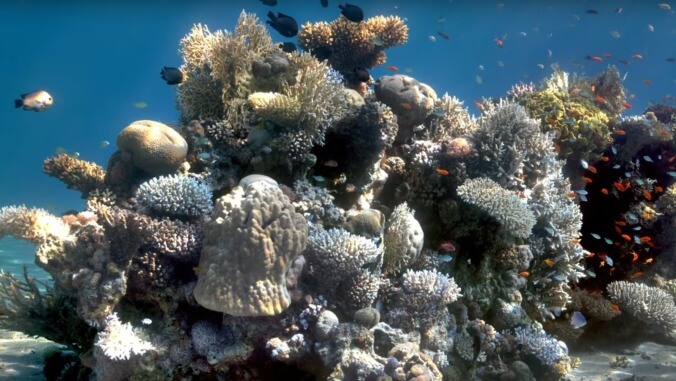Technology advances so quickly and relentlessly in our era that it’s hard to be blown away by much of anything. Portable, internet-enabled computers that fit in our pockets? Who cares. Movie de-aging techniques that can turn an older Will Smith into a younger Will Smith without looking like complete garbage? Boring. French daredevils zipping around the sky on goddamn hoverboards? We’ll be excited when they crack flying cars and not a moment before.
And yet, despite getting used to just about every incredible new technological breakthrough, here we are, extremely impressed by the researcher who’s written an algorithm that “removes” all that pesky water, and the visual distortions it creates, from underwater photography.
As Scientific American’s Erik Olsen reports, marine biologists and photographers have always had to compensate for the fact that water “selectively absorbs and scatters light at different wavelengths,” obscuring their subjects to the point that, for example, those studying coral reefs have to do so without the aid of important tools like “computer vision and machine-learning algorithms.” The invention of Sea-thru, which sounds like something you’d buy in a cleaning aisle, looks to change that by giving scientists access to an algorithm that can basically take the “water” part out of the whole “underwater photography” equation.
Sea-thru was created by Derya Akkaynak, an engineer and oceanographer, and works by “[analyzing] factors in the physics of light absorption and scattering in the atmosphere, compared with that of the ocean” and “effectively [reversing] image distortion from water pixel by pixel, restoring lost colors.” An accompanying Scientific American video profiling Akkaynak and her work shows off how her four-year project looks in action, turning the sort of blue and green-tinged images we associate with underwater photos into clearer, more accurately colored ones.
Check out the video or read the entire article for further details and to see some examples of the algorithm in action. Considering we’re currently on a trajectory to live on a planet largely comprised of endless, crashing waves, it’s nice to know that there’s one bit of technology, at least, that’ll ensure we might better be able to understand our new fishy friends’ biology and, most importantly of all, still be able to get very good selfies when swimming around our new backyards.
[via Digg]
Send Great Job, Internet tips to [email protected]


 Keep scrolling for more great stories from The A.V. Club.
Keep scrolling for more great stories from The A.V. Club.